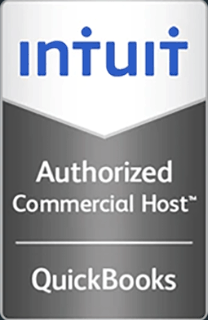Share Applications and Data with Remote Desktop
In the dynamic whirlwind of a growing organization, the art of delivering the latest and greatest applications to meet business needs can be a time consuming and expensive task. Tracking down remote or roaming users, updating branch offices, applying and verifying security patches, and interoperability issues with multiple client operating systems or hardware quickly inflate the cost of applications deployment, in both time and cash. Using remote desktop, much of this headache and expense can be avoided, while providing the best services and applications.
Remote desktop allows an organization running a server to share applications with client machines running other versions of Windows operating systems, or with Apple hosts running Windows Remote Desktop for Mac. Applications are installed and execute on a server, and are accessed through the Remote Desktop software on the client laptop or desktop. Apps look and feel as though they are installed on the client’s machine, allowing the user to run them side-by-side with other programs that are installed on their PC. Window size/resize/minimize acts as usual, and if multiple apps are accessed, the same terminal services session is utilized, reducing bandwidth requirements.
Using remote desktop has some great advantages over installing software on individual client PC’s. The most important is that only one instance of the software is installed on the server. This is in stark contrast to the traditional lengthy software deployment cycle to individual client PC’s which starts with procurement of multiple versions, regression testing for multiple OS platforms (both client and server), security patching and updating, rollout package creation, deployment cycles, outlier tracking and mitigation and finally competition of the enterprise wide deployment. With remote desktop, the software is procured for the single OS which is running on the server, deployed and tested, patched or updated, then made live for the entire enterprise with a click of a button. Once live, all users accessing their remote desktop software are instantly brought to the current corporate standard. No more lengthy tail of trouble tickets that extends for months as occasional users of the software realize that they have an outdated version. No more calls for stuck or failed installs. No more incompatibility with legacy data sets. All of these pitfalls can be tested, and once mitigated, the enterprise is updated seamlessly.
Once deployed, the advantages of serving applications with remote desktop continue. Patching and update cycles can be completed in short service windows, as only one copy of the software is being updated. This is done by the server admin once, and relieves the organization of the burden of software vault infrastructure. Software corruption on the client side and re-install tickets become a thing of the past. Because the client machine accesses the application through Remote Desktop, the execution of the software happens on the server, any variations or instability in the client PC is bypassed. Users experience the look & feel of having the application installed directly on their machine, while administrators have the assurance & ease of managing a centralized server-side application.
Using remote desktop to consolidate applications will increase service delivery, while reducing the cost of systems management. Providing software services on a single hardware and OS platform reduces complexity in the install/patch/upgrade lifecycle, while maintaining a common version across the enterprise. A common version for all users will increase productivity and reduce support time and cost. Locating applications servers alongside other datacenter resources preserves security and control, while limiting the overhead required providing and maintaining services.





